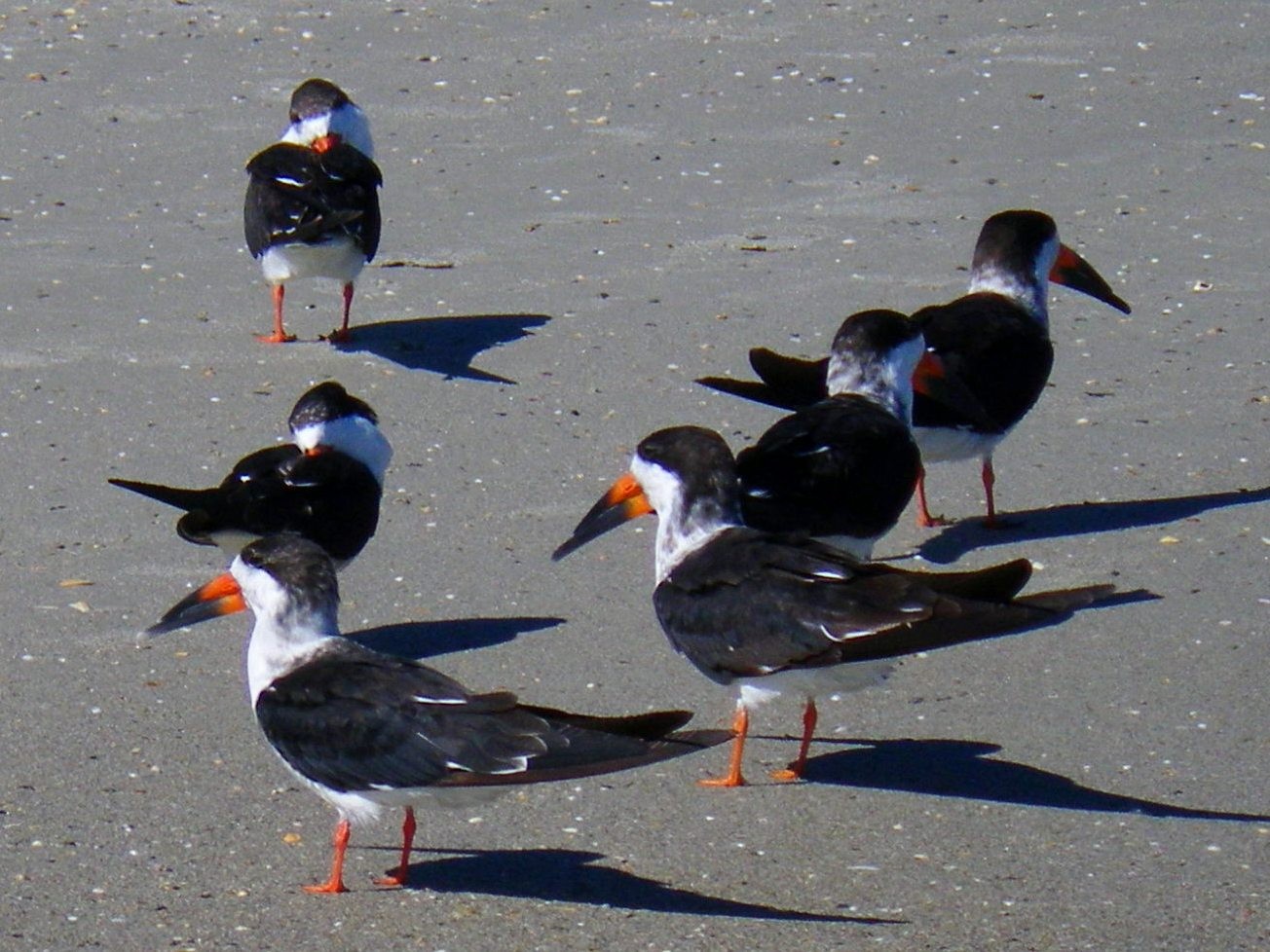Black Skimmer
A species of Skimmers, Also known as Black Shearwater Scientific name : Rynchops niger Genus : Skimmers
Black Skimmer, A species of Skimmers
Also known as:
Black Shearwater
Botanical name: Rynchops niger
Genus: Skimmers
Content
Description People often ask General Info
Description
The black skimmer is the largest of the three skimmer species. It measures 40–50 cm (16–20 in) long with a 107–127 cm (42–50 in) wingspan. This species ranges from 212 to 447 g (7.5 to 15.8 oz), with males averaging about 349 g (12.3 oz), as compared to the smaller females 254 g (9.0 oz). The basal half of the bill is red, the rest mainly black, and the lower mandible is much-elongated. The eye has a dark brown iris and catlike vertical pupil, unique for a bird. The legs are red. The call is a barking kak-kak-kak. Adults in breeding plumage have a black crown, nape and upper body. The forehead and underparts are white. The upper wings are black with white on the rear edge, and the tail and rump are dark grey with white edges. The underwing colour varies from white to dusky grey depending on region. Non-breeding adults have paler and browner upperparts, and a white nape collar. Immature birds have brown upperparts with white feather tips and fringes. The underparts and forehead are white, and the underwings as the adult. 
Size
46 - 48 cm
Colors
Black
Red
White
Orange
Life Expectancy
20 years
Nest Placement
Ground
Clutch Size
1 - 5 eggs
Incubation Period
1 brood
Number of Broods
21 - 25 days
Feeding Habits
Black Skimmer feed by skimming waters with their elongated lower mandible to catch fish under 5 inches, particularly during calm winds and in large flocks. They consume a variety of fish, crustaceans, and occasionally molluscs and insects, aligning their foraging with tidal cycles primarily around low and high tides.
Habitat
Black Skimmer predominantly inhabits coastal environments including ocean beaches, estuaries, and tidewater zones. These birds prefer open and flat areas such as sandy shores, gravel or shell bars, and tidal flats with minimal vegetation or patches of dead vegetation (wrack) in saltmarshes. While typically found at sea level, some populations occupy large inland lakes. They frequent waters that aggregate prey like bays, lagoons, and creeks. Habitat loss due to coastal development has restricted their range.
Nest Behavior
Mates alternate in making scrapes, exhibiting an exaggerated posture during construction. Scrape-making is brief, often with several attempts before selecting one for eggs. Black Skimmer lays eggs in these scrapes and may benefit from nesting near aggressive tern colonies for protection against predators.
Nest Characteristics
Black Skimmer typically nest on sandy, shelly, or stony ground, in locations with low vegetation, such as islands or remote beaches. They may also use saltmarshes. Their nests are simple scrapes, saucer-shaped depressions about 10 inches in diameter and 1 inch deep, formed by kicking sand with alternating foot strokes.
Dite type
Piscivorous
People often ask
General Info
Feeding Habits
Bird food type
Sounds
Call
Recording location: United States
Behavior
Black Skimmer exhibit a distinguished routine in their daily activities. Typically, they are spotted gracefully gliding above water, skimming the surface with their elongate lower mandible, searching for fish. On land, they opt for a full-bodied rest, with their heavy bill resting on the sand, to alleviate neck strain and manage thermoregulation. Vigilantly napping within flocks, black Skimmer on the periphery maintain a lookout posture, bill tucked away and eye alert to threats. These birds reveal a remarkable agility when navigating nesting sites, engaging in a variety of displays – from aerial courtship dances to synchronized ground parades, highlighting their social interactions. Males fiercely defend their breeding territories through an array of warning behaviors and calls, and partake in courtship feeding and distinct mating gestures that strengthen pair bonds.
Species Status
Not globally threatened.
